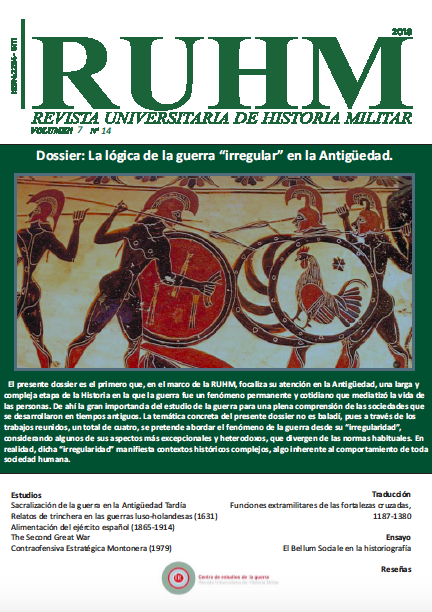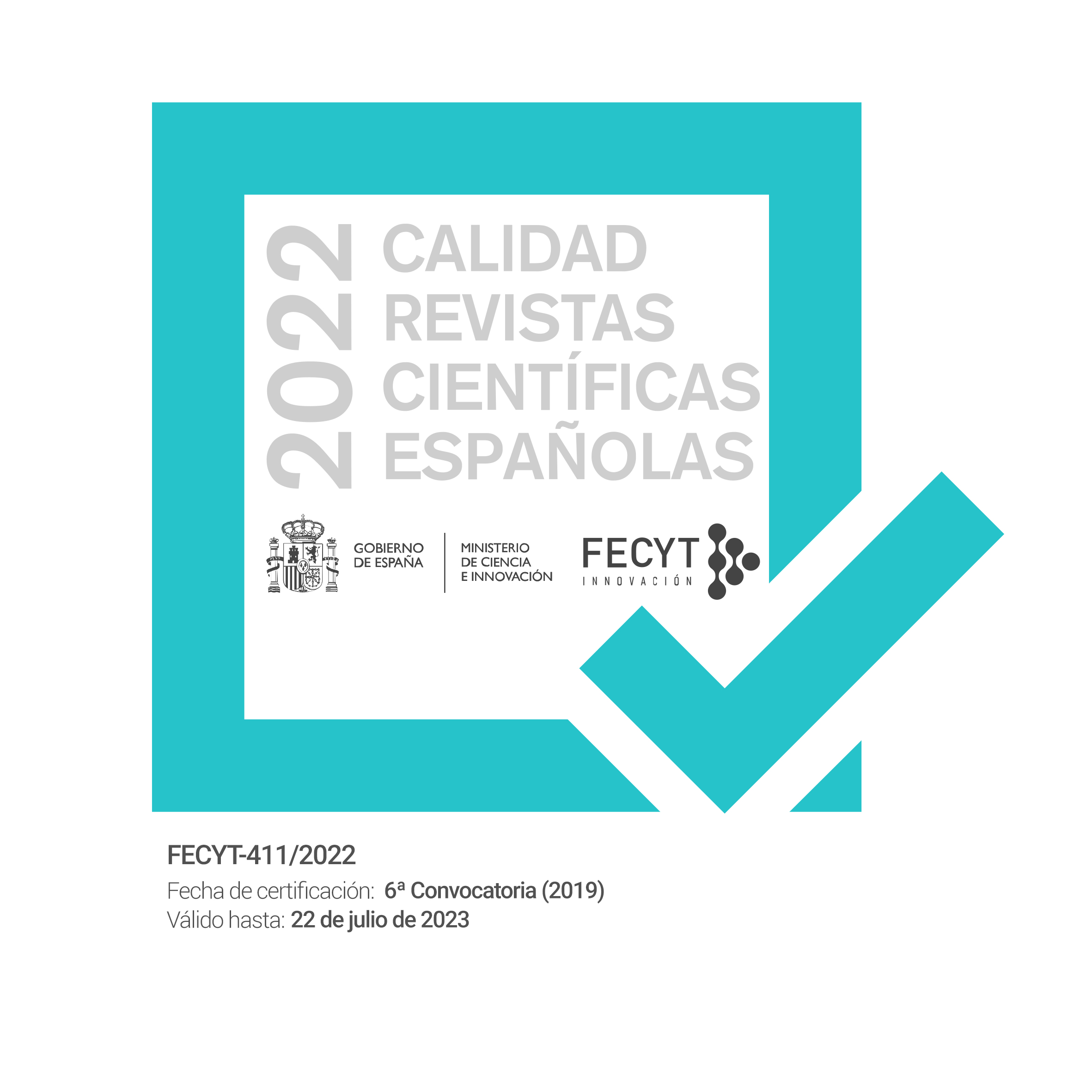The Second Great War, 1917-1923
DOI:
https://doi.org/10.53351/ruhm.v7i14.435Palabras clave:
Great War, second Great War, post-imperial violence, first European postwarResumen
This essay presents a bifurcated interpretation of the history of the Great War, dividing it into two parts, the first lasting from 1914 to 1917, the second continuing from 1917 to 1923. In this way, I register developments in historiography in which two major changes have occurred in recent years: first, a shift of the geographical epicenter of the war from Paris to Warsaw, and secondly, a shift in the chronology of the war recognizing its failure to end in 1918.
The interpretation posits that there was a crisis in 1917 which separates the first three years of the conflict from the years that followed, and was largely the result of powerful economic and demographic pressures which destabilized all the combatants, but more so the Central powers than the Allies. This crisis abated somewhat in the west in 1918 but continued in an exacerbated form for the following five years. Hatred, hunger, and class conflict were radicalizing elements in the disorder of the post-Imperial world, set adrift by the collapse of the Hohenzollern, Habsburg, and Ottoman empires. Post-imperial violence was endemic in these regions, merging civil war, ethnic conflicts, and national conflicts which played out in this, the Second Great War. My claim is that the passage from wartime crisis to post-war and post-Imperial violence was seamless, and part of one complex but distinctive phase of European history, starting in 1917 and terminating more or less in 1923.
Thus among the legacies of the two Great Wars of 1914-17 and 1917-23 was the creation of an elision between war and civil war precipitating an avalanche of violence extending from one period of global conflict to another. The result was a degeneration of warfare from an institution bounded by political and legal limits into a field of force in which whole peoples could disappear from the face of the earth. Just as the Armenian genocide was the direct outcome of the logic of the total war of 1914-17, the Holocaust was the final statement of the ferocity of total civil war, that form of violence which emerged during the second Great War of 1917-23.
Descargas
Referencias
Charles TILLY: Strikes, Wars and Revolutions in an International Perspective, Cambridge and Paris, Cambridge University Press and Éditions de la MSH, 1989; Leopold HAIMSON and Giulio SAPELL (eds.): Strikes, Social Conflict and the First World War. An International Perspective, Milan Feltrinelli,1992.
Manuel GOMEZ-BRUFAL : Joseph Caillaux: Traitre our visionnaire, Paris Dualpha editions, 2014.
Harper BARNES: Never Been a Time: The 1917 Race Riot That Sparked the Civil Rights Movement, New York, Walker & Company, 2008.
Ernest FREEBERG: Democracy’s prisoner: Eugene V. Debs, the Great War and the right to dissent, Cambridge, Mass., Harvard University Press, 2008.
E.A. SCHWARTZ: “The Lynching of Robert Prager, the United Mine Workers, and the Problems of Patriotism in 1918”, Journal of the Illinois State Historical Society, 95:4 (2003), pp. 414-437.
Richard BESSEL: “Mobilization and demobilization in Germany, 1916-1919”, in John HORNE (ed.), State, society and mobilization during the First World War, Cambridge, Cambridge University Press, 2002, pp. 50-67.
André LOEZ and Nicolas MARIOT (eds.): Obéir / Désobéir. Les mutineries de 1917 en perspective, Paris, La Découverte, 2008.
On the use of the term “climacteric” in economic history, see Donald N. McCLOSKEY: “The British Iron and Steel Industry, 1870-1914: A Study of the Climacteric in Productivity”, Journal of Economic History, 29:1 (1969), pp. 173-75.
Stéphane AUDOIN ROUZEAU and Annette BECKER : 1914-1918 Retrouver la guerre, Paris, Gallimard, 2000.
Marc FERRO: Ressentiment dans l’histoire: Comprendre notre temps, Paris, Odile Jacob, 2007.
William W. HAGEN: “The Moral economy of popular violence: The pogrom in Lwów, November 1918”, Geschichte und Gesellschaft, 31:2 (2005), pp. 203-226.
For a fuller discussion, see Jay M. WINTER: The Great War and the British People, London, Macmillan, 1985, chapter 3.
See Wilhelm DEIST: Militär Staat und Gesellschaft. Studien zur preussisch-deutschen Militärgeschichte, Munich, Oldenbourg, 1991.
Adolf HITLER: Mein Kampf, New York, Reynal and Hitchcock, 1939.
L. BORCHARDT: “The impact of the war economy on the civilian population”, in Wilhem DEIST (ed.), The German Military in the age of total war, Oxford, Berg, 1984.
See A. OFFER: The First World War. An Agrarian interpretation, Oxford, Oxford University Press, 1990.
Amartya SEN: Poverty and Famines. An Essay on Entitlement and Deprivation, Oxford, Blackwell, 1976.
See J.J. BECKER et al. (eds): Guerres et cultures, Paris, Armand Colin, 1994.
On this theme see Stéphane AUDOIN ROUZEAU: La guerre des enfants, 1914 1918: essai d’histoire culturelle, Paris, Armand Colin, 1993.
Peter GAY: The Cultivation of Hatred. The Burgeois Experience – Victoria to Freud, New York, Norton, 1993.
I owe this image to the late George Mosse. For a comparison which emphasises choice and contingency, see Jonathan STEINBERG: All or nothing. The Axis and the Holocaust, London, Routledge, 1990.
Paul PRESTON: The Spanish Holocaust. Inquisition and Extermination in Twentieth-Century Spain, London, Harper Read, 2012.
Anna AKHMATOVA: Selected poems, trans. by Richard McKane, London, Bloodaxe Books, 1989, p. 96.
Descargas
Publicado
Número
Sección
Licencia
Derechos de autor 2018 Revista Universitaria de Historia Militar

Esta obra está bajo una licencia internacional Creative Commons Atribución-NoComercial-SinDerivadas 4.0.
Licencia Creative Commons Atribución-NoComercial-SinDerivar 4.0 Internacional
Esto es un resumen legible (y no un sustitutivo) de la licencia.
Usted es libre para:
Bajo los siguientes términos:
-
Atribución — Usted debe darle crédito a esta obra de manera adecuada, proporcionando un enlace a la licencia, e indicando si se han realizado cambios. Puede hacerlo en cualquier forma razonable, pero no de forma tal que sugiera que usted o su uso tienen el apoyo del licenciante.
-
NoComercial — Usted no puede hacer uso del material con fines comerciales.
-
Sin Derivar — Si usted mezcla, transforma o crea nuevo material a partir de esta obra, usted no podrá distribuir el material modificado.
No hay restricciones adicionales — Usted no puede aplicar términos legales ni medidas tecnológicas que restrinjan legalmente a otros hacer cualquier uso permitido por la licencia.








